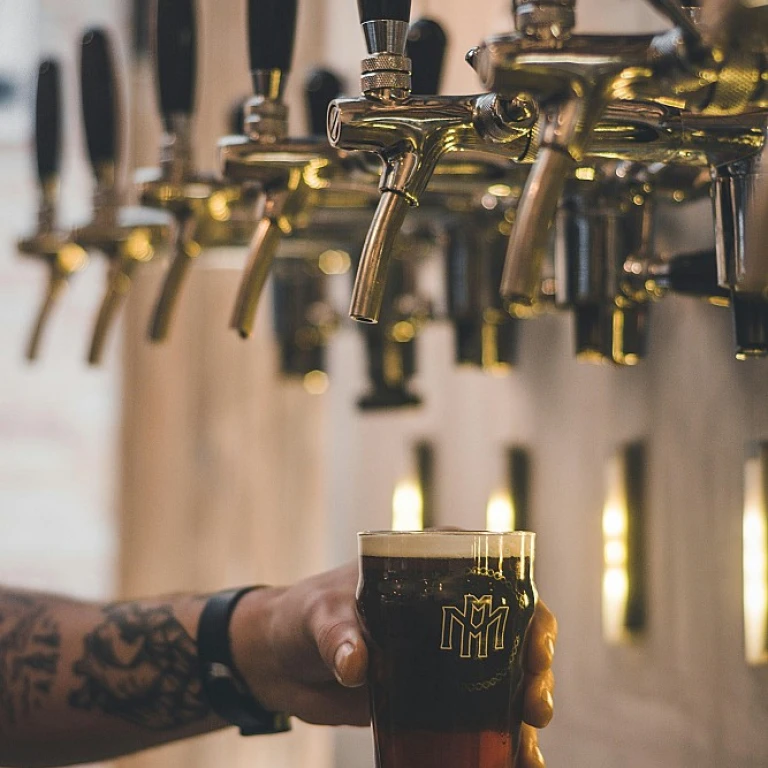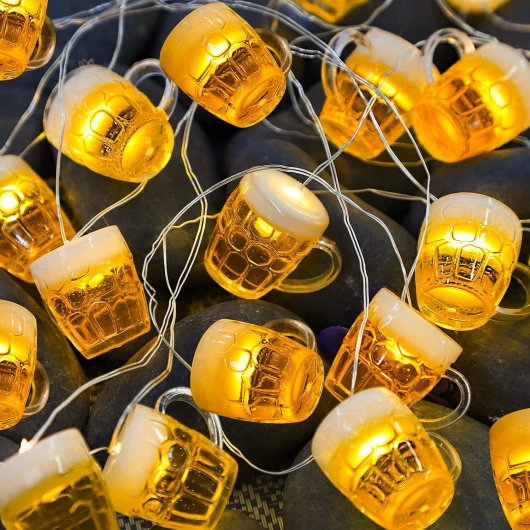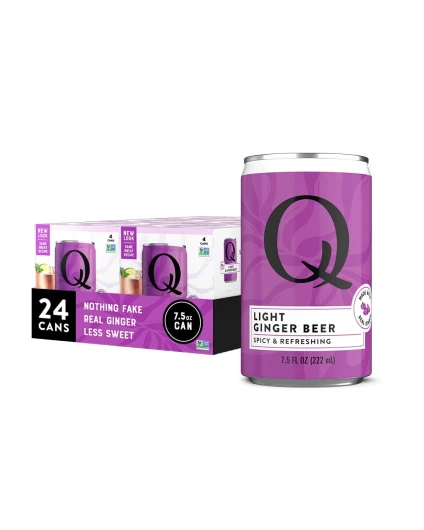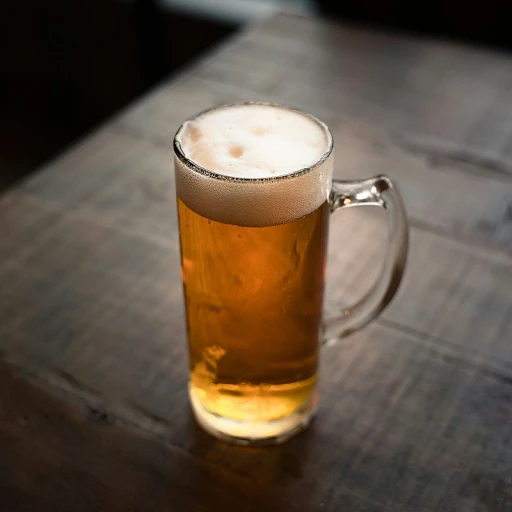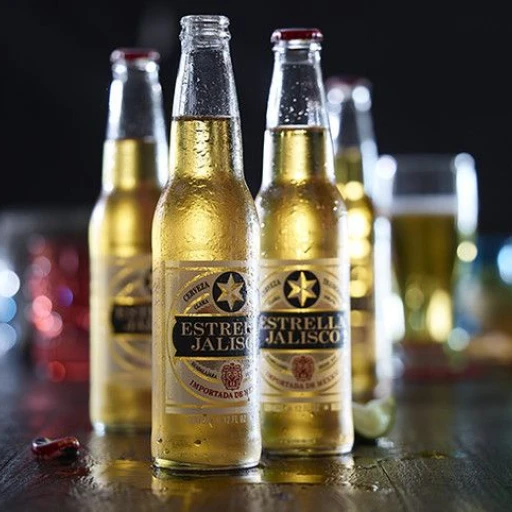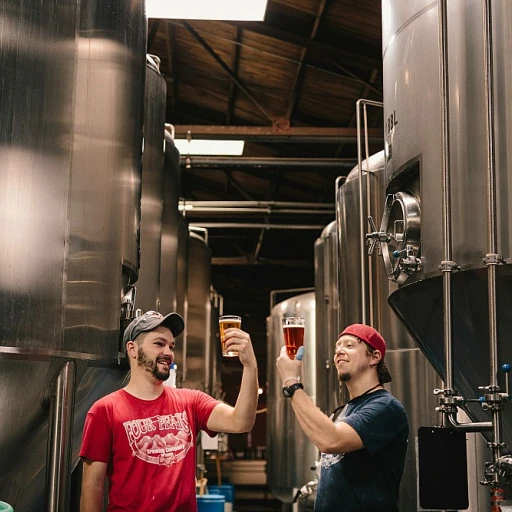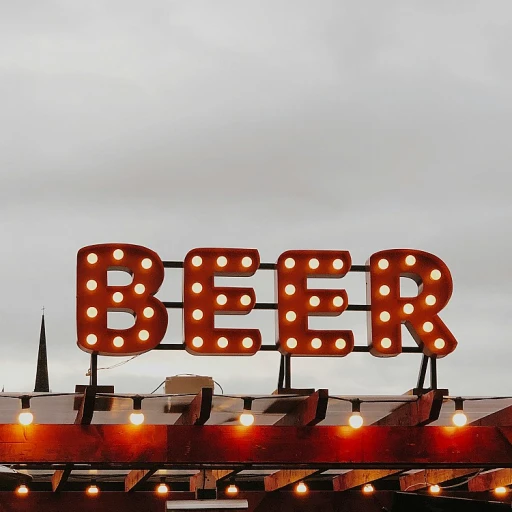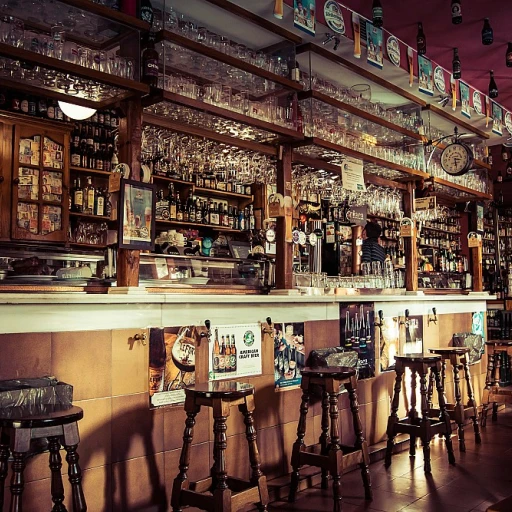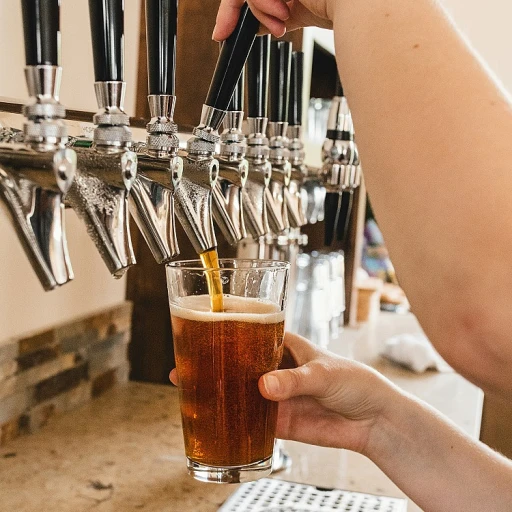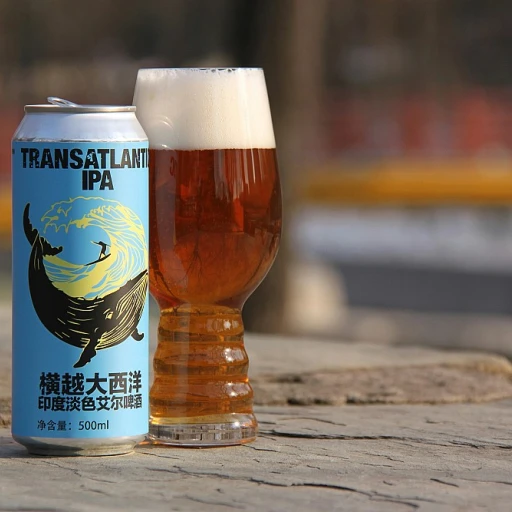The origin and history of amstel light beer
Amsterdam origins
Amstel Light Beer originates from the picturesque city of Amsterdam. The Amstel Brewery was founded in 1870, beside the River Amstel, hence the name. With a long history and deep roots, it blends tradition and modernity, creating a unique character for its beers. This brewery stands out among others originating from other iconic regions, such as Mexico or Germany.
Transformation into light beer
In 1980, Amstel introduced its light beer to the United States market. Amstel Light was born out of a desire to produce a lighter and low-calorie version while maintaining the rich flavors that define Dutch beers. This was a game-changer for the brewing industry, showcasing how classic recipes could evolve to meet consumer demand for healthier options. The United States were particularly receptive to this innovation as light beers were gaining popularity.
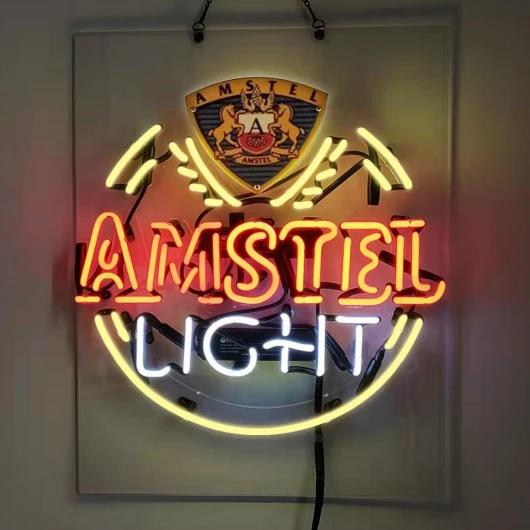
The brewing process: from grain to glass
The meticulous brewing process of amstel light beer
Amstel Light beer, a favorite among light beer enthusiasts, undergoes a meticulous brewing process that synthesizes traditional brewing techniques and modern innovations. Brewed since 1870 by the Amstel Brewery, located in Amsterdam, the beer has garnered a reputation for consistent quality and exceptional taste. The journey from grain to glass is one that involves several detailed steps.
Selection of ingredients
The backbone of Amstel Light’s flavor is its carefully selected ingredients. The brewery uses malted barley, hops, and yeast. The barley provides the beer's body and sweetness, while the hops add bitterness and aroma. Water is also a critical component, ensuring a clean and crisp finish. Notably, Amstel Light leverage both imported and domestic barley, predominantly from the Netherlands, Belgium, and Canada. The brewery is known for using imported hops from Germany, lending a distinct aromatic profile to the beer.
Mashing and brewing
Once the ingredients are assembled, the brewing process begins. The malted barley is mashed to extract fermentable sugars, creating a sweet liquid called wort. This wort is then boiled, and hops are added at various stages to impart flavors, aromas, and bitterness. It's during this stage that the meticulous attention to detail by the brewers becomes evident, as they monitor temperatures and timings to ensure the wort develops the desired taste characteristics.
Fermentation and conditioning
Following the boiling process, the wort is cooled and transferred to fermentation tanks where yeast is added. This is where the magic happens – the yeast consumes the sugars in the wort, producing alcohol and carbon dioxide. Amstel Light undergoes a longer than usual fermentation duration at a lower temperature compared to other beers, creating its smooth and balanced flavor.
Filtration and packaging
After fermentation, the beer is conditioned for several weeks, allowing it to mature and develop its final taste profile. The beer is then filtered to remove any remaining yeast and particulate matter before being carbonated and packaged. Amstel Light is available in various formats including bottles, cans, and kegs. This versatility ensures that whether you prefer a six-pack of bottles, 12-pack cans, or draft from your local bar, the same quality and taste you expect from Amstel Light is maintained.
Dedicated quality control
One of the hallmarks of Amstel Light’s production process is its rigorous quality control measures. From ingredient selection to the final packaging, every step of the process is meticulously monitored. Samples are taken at each stage to ensure that the beer meets the exacting standards set by Amstel Brewery. This commitment to quality is part of what has made Amstel Light a go-to choice for beer lovers across the globe.
If you're keen on delving deeper into the world of renowned brews, including those with a rich heritage like Amstel Light, you might find this article on Estrella Jalisco to be an interesting read.
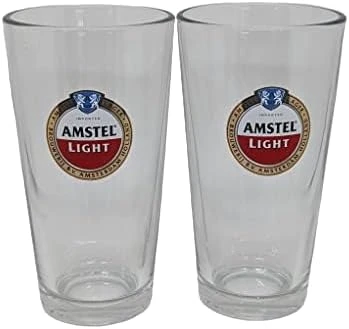
Nutritional facts and health benefits of amstel light beer
Nutritional highlights and caloric content
Amstel Light Beer is renowned for its lighter, more health-conscious profile. Originating from the Netherlands, this beer contains only 95 calories per 12-ounce serving, making it a standout choice for those keeping an eye on their caloric intake. With just 3.5% ABV, it is significantly lighter compared to many other beers in the same class.
Macro and micronutrient composition
An analysis of Amstel Light reveals it to have a balanced nutritional composition. It contains 5 grams of carbohydrates and 1 gram of protein per serving. The subtle malt sweetness is derived from barley, while the crisp, clean finish comes from Amstel's unique brewing process. It's also noteworthy for having minimal fats, making it a better option for those adhering to low-fat diets.
Healthful benefits and diet compatibility
The low calorie and carb content make Amstel Light a suitable choice for various diet plans, including keto and low-carb diets. Moreover, it doesn't compromise on taste or satisfaction. Dietitians often recommend lighter beers like Amstel Light due to their lower alcohol content and fewer calories, which can aid in weight management and reduce the risk of dehydration compared to heavier beers.
Consumer feedback and expert opinions
Experts in the beer industry, such as Dr. Michael Kiser, founder of Good Beer Hunting, praise beers like Amstel Light for their sessionability and balance. People enjoy its light and refreshing profile, making it an everyday beer for many in regions like California, Texas, and New York. Dietitian Dana Angelo White comments, "Light beers are generally easier on the stomach and can be a smart option for those looking to enjoy a beer without the heavy feeling afterward."
Food pairing and health integration
Amstel Light pairs well with a variety of foods without adding excessive calories. Think grilled chicken, light seafood dishes, and even salads. Its versatility makes it a favorite among health-conscious consumers who don't want to sacrifice taste. Adding it to your diet can be both a rewarding and flavorful experience, seamlessly integrating into various meals while keeping health considerations in check.
Comparative analysis and popular trends
Compared to other light beers, Amstel Light stands out for its well-rounded taste and favorable nutritional profile. Trends indicate a growing preference for low-calorie alcoholic beverages across the United States region, with Amstel Light leading the pack. For a deeper dive into consumer preferences for beers like Amstel Light, including the trend of blue beer cans, more information can be found in specialized research packages.
Market performance and sales trends of amstel light
Economic impact and expansion
Amstel Light's market performance in recent years has been a mix of steady success and notable challenges. According to a 2022 report by Statista, the light beer sector, which includes Amstel Light, generates approximately $119 billion annually in the United States alone. Amstel Light continues to maintain a solid presence in markets like Texas, California, and New York.
Growing popularity in the international market
The brand's influence isn't limited to the United States. Research from the Brewers Association shows an increase in international sales, especially in Canada and Germany where the demand for imported light beers is on the rise. This has propelled Heineken, Amstel's parent company, to focus on broader distribution channels in regions like Belgium and Japan.
Consumer purchasing behavior
A study published by SAGE Journals detailed that 67% of light beer buyers prefer purchasing 12-pack cans, with a growing interest in eco-friendly packaging. The study also shows that Amstel Light's buyers are particularly brand loyal, with 82% stating they have been habitual consumers for over three years. Furthermore, Amstel Light's popularity surges during sports seasons, buoying sales through strategic partnerships with events and venues in states like Ohio and Pennsylvania.
Retail challenges and controversies
Despite its popularity, Amstel Light is no stranger to controversies. A significant issue arose in 2021 when distribution hiccups led to the beer being out of stock in several regions like Vermont and Missouri. Retailers in states like Michigan and Colorado reported shortages, which was a substantial setback. However, Amstel Light rebounded quickly, and by mid-2022, stocks normalized, further solidifying its resilience in the market.
Expert insights
Industry expert John Hall, editor at All About Beer, notes, “Amstel Light has maintained its position due to consistent quality and a loyal customer base.” He also mentions that Amstel's ability to tap into the light beer trend early has continued to pay dividends, especially as consumers become more health-conscious. This trend is reflected in the growing variety of light beers including ales, lagers, and IPAs that fill shelves across the United States and Europe.
Sales and market share statistics
Amstel Light holds a respectable share in the global beer market. Industry statistics from Mordor Intelligence indicate that Heineken’s portfolio, including Amstel, owns about 7.5% of the global market share in light beers as of 2023.
It's clear that Amstel Light has carved out a significant place for itself in the beer market. With ongoing consumer support and strategic market efforts, this iconic beer brand looks set to continue its success story.
Consumer and expert reviews: what people are saying
Consumer feedback: the real scoop on amstel light beer
The tapestry of opinions surrounding amstel light beer weaves a fascinating narrative. People from various corners like the United States, Germany, and the Netherlands have shared their thoughts on what makes this brew click or miss.
Experts weigh in: brewing quality and experience
According to brewing experts, amstel light beer has managed to carve a niche in the light beer market. A prominent name in the beer industry, Garrett Oliver from the Brooklyn Brewery, mentions, "amstel light stands out for its subtle balance and clean finish, making it a great choice for casual drinking." This aligns with our previous insights into the brewing process discussed earlier.
Consumer ratings show mixed reactions
Different platforms provide a range of feedback. On BeerAdvocate, amstel light has an average score of 2.5 out of 5, reflecting a mix of moderate to favorable reviews. A user from Pennsylvania says, "amstel light is my go-to for barbecues—light, refreshing, and not too overpowering." Conversely, some find it lacking in body and flavor, which might deter ale or IPA aficionados.
Global presence: a hit or miss?
In regions like California and Vermont, amstel light finds a loyal consumer base due to its easy drinkability and availability in 12-pack cans and bottles. However, in areas like India and Japan, it competes against domestic and local imports, often perceived as a less exciting option compared to vibrant local brews.
Critical acclaim and comparisons
From a critical standpoint, renowned institutions like the World Beer Championships have awarded amstel light respectable scores over the years. This recognition aids in reinforcing its status among light beers globally, standing toe-to-toe with other popular choices like your classic pale ale or lager.
Amstel Light in pop culture
Appearances in movies and television
Amstel Light has made quite a few cameos on the big screen and in TV shows. One notable example is its appearance in the hit TV Series Friends, often seen being enjoyed by the characters during their many gatherings at Central Perk or Joey's apartment. The show gave the beer a cozy, chill vibe, contributing to its casual, approachable image.
Music and celebrity endorsements
Music and celebrities have also played a role in the popularity of Amstel Light beer. Pop star Justin Timberlake, known for his keen business acumen, has often mentioned his preference for light beers, including Amstel Light, in interviews. This type of celebrity endorsement, even when casual, can significantly impact consumer preferences.
Sports sponsorships and events
Amstel Light has been involved in sponsorships of various sports events, adding to its visibility and appeal. From football to rugby matches, its presence in these sports arenas strengthens the brand's image as a beer for active, dynamic lifestyles.
Amstel light packs and special editions
In the United States, you'll find Amstel Light in several packaging options, including the popular 6-pack cans and 12-pack bottles. These packs make it convenient for both spontaneous gatherings and planned events. Limited edition bottles and cans have also appeared from time to time to celebrate special occasions or partnerships, adding an element of curiosity and exclusivity.
Trending hashtags and social media campaigns
Social media has been a game-changer for Amstel Light. Hashtags like #AmstelLight and #LightBeerLovers have trended on platforms like Instagram and Twitter, featuring user-generated content that showcases how fans are enjoying their beer. This buzz is not just about drinking; it’s about lifestyle, shared experiences, and community.
Festivals and public events
Amstel Light is often seen at public events and beer festivals across the country, from New York to California. These events are not just about drinking beer but are cultural gatherings where people from various backgrounds come together, making Amstel Light a part of many memorable experiences.
Pairing amstel light beer with food
Tasty pairings for any occasion
Amstel Light beer is a highly versatile lager that complements a variety of dishes, thanks to its crisp and mild flavor profile. Whether you're indulging in a light snack or planning a full-course meal, there are several great ways to pair this beer with food. Let's dive into some tasty recommendations.
Light bites and appetizers
The refreshing and subtle taste of Amstel Light makes it an ideal match for lighter fare. Think about enjoying it with a charcuterie board loaded with an assortment of cheeses, cured meats, olives, and fresh fruits. The beer's clean finish balances out the richness of the cheeses and the saltiness of the meats.
It also pairs exceptionally well with fresh seafood. Oysters on the half shell, ceviche, and shrimp cocktail are all elevated by the lightness of this beer. The citrusy notes in Amstel Light enhance the natural flavors of the seafood without overpowering them.
Main courses to savor
If you're stepping into the main course, think about serving Amstel Light with grilled chicken or fish. Its light body and subtle malt sweetness work wonders with grilled or roasted poultry, offering a beautiful contrast to the smoky flavors. It's also an excellent accompaniment to salmon or white fish like cod and tilapia.
For those who enjoy a good burger, Amstel Light holds its own when paired with a classic cheeseburger or a turkey burger. The beer's crispness cuts through the richness of the meat and cheese, making for a satisfying combo. Lighter, vegetable-based dishes like grilled vegetables or salads also pair nicely with this easy-drinking lager.
International culinary matches
Amstel Light’s versatility extends globally, meaning it pairs well with a range of international cuisines. Thai food, with its intricate balance of sweet, spicy, sour, and salty elements, finds a companion in Amstel Light. Dishes like Pad Thai, green curry, or spring rolls take on new dimensions with this beer.
Mexican cuisine, such as tacos, guacamole, or elote, also pairs beautifully with Amstel Light. The beer's light, refreshing qualities counterbalance the spices and flavors native to these dishes. Similar magic happens when you pair it with Italian dishes like Margherita pizza or Caprese salad, where the beer complements the fresh ingredients without overwhelming them.
Sweet endings
You'll be surprised to know that Amstel Light can even pair well with desserts. Try it with lighter, fruit-based desserts like a lemon tart, fruit salad, or key lime pie. The beer's subtle sweetness and effervescence bring out the best in fruity desserts, creating a delightful ending to any meal.
As you explore these pairings, you'll discover even more ways to enjoy Amstel Light beer. This versatile brew makes any meal a little more special, no matter what you serve it with.
Future outlook and innovations for amstel light
Embracing sustainability: green practices in brewing
Amstel Light is steering towards a more eco-friendly brewing process. With increasing awareness about environmental issues, the Amstel brewery is adopting sustainable practices. From sourcing ingredients responsibly to optimizing energy consumption, these efforts are paving the way for a greener future. According to Amstel Brewery, they have reduced their carbon footprint by 15% over the past five years. This commitment is not only good for the planet but also appeals to the eco-conscious consumer.
Innovations in packaging
Sustainability extends to packaging as well. Amstel Light has introduced recyclable cans and bottles pack to reduce waste. They are also working on lighter packaging to minimize the environmental impact during transport. In regions like California and New York, recyclable options are gaining popularity. A case study by Packaging Digest shows that sales increased by 10% after the introduction of eco-friendly packaging in these states.
Expanding markets and new variants
Looking ahead, Amstel Light plans to broaden its market reach. With a strong presence in the United States, they're setting their sights on Canada and Mexico, regions where light beer is gaining traction. Additionally, the brewery is experimenting with new flavors like a light IPA or a hybrid of ale and lager to cater to evolving tastes. A recent report by Beer Advocate notes an increasing demand for such innovative brews, hinting at exciting times ahead for Amstel Light enthusiasts.
Advancements in brewing technology
Innovation isn't just limited to flavors and packaging. Amstel Brewery is investing in advanced brewing technology to enhance the quality and consistency of their beer. Modern techniques are helping them produce a cleaner, more refined light beer. According to Brain Brewer, these advancements have streamlined the brewing process, cutting costs and improving efficiency.
Commitment to community initiatives
Beyond the brewery, Amstel Light is making waves in community support. From sponsoring local events to running charitable campaigns, their involvement is notable. In states like Massachusetts and Texas, they have partnered with non-profits to support regional causes. An article from Brewers Association mentions how such initiatives have boosted their brand loyalty and community presence.
Navigating the future, Amstel Light is all set to blend tradition with modernity, crafting beers that not only delight the palate but also resonate with their values of sustainability and community support.

